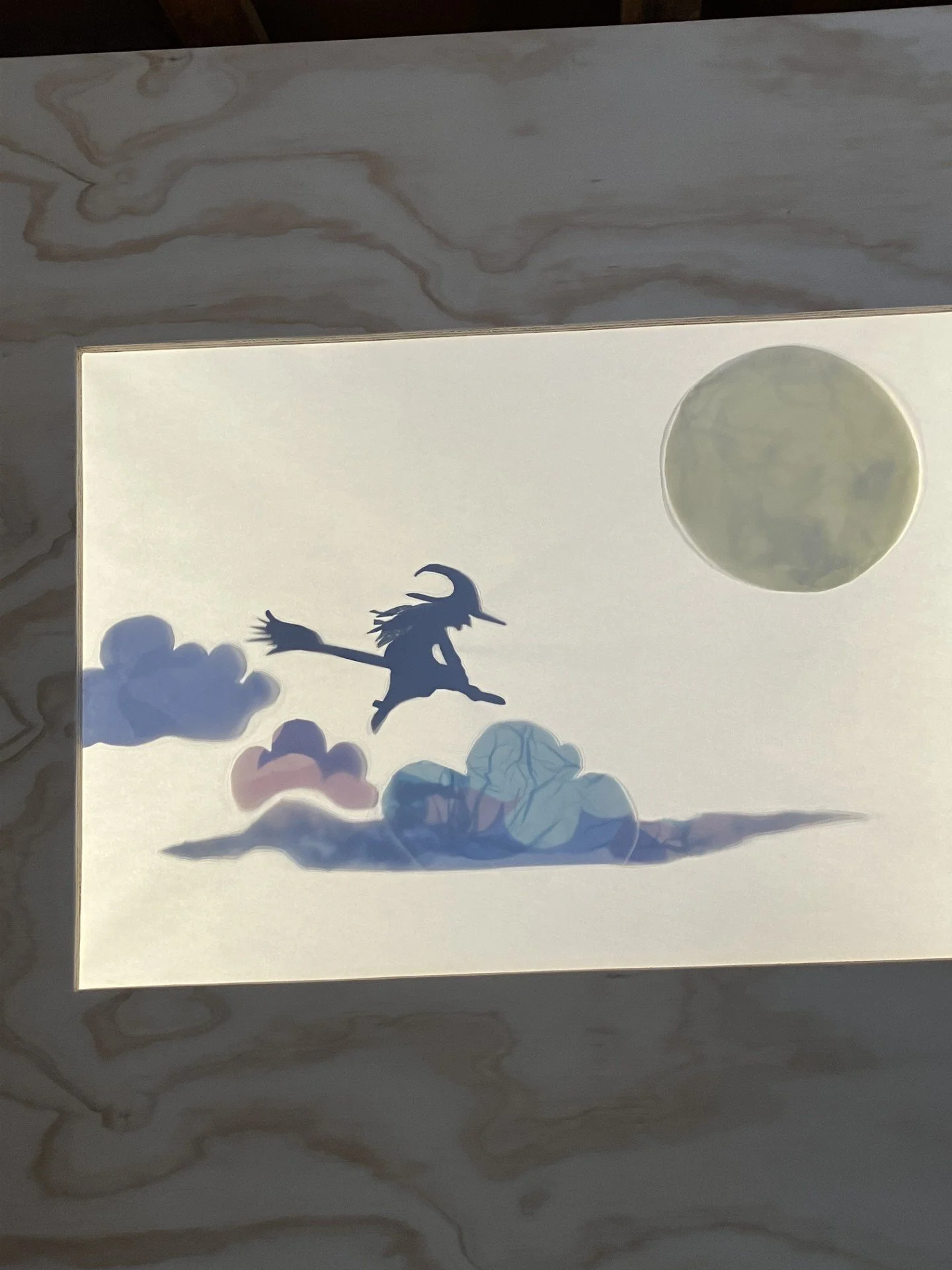Working with Silhouettes
by: Amber Smith of Forest Folk School Friends
Puppets and Photos by Marjorie Rehback and Kolea Quincey
Enter a world of shape, color, and light with Silhouette Shows. Begin by drawing inspiration from old folktales, verses, or songs. From here, you will need to develop your understanding of the elements of light and shadow in order to engage your audience in a meaningful experience using your own silhouette characters.
WHAT IS LIGHT?
Light is a visible energy that illuminates the world and makes objects visible to the human eye. The eyes are a sensory organ used to observe the world outside of the body. These outside observationsbecome interpreted inside the body through the brain, using logical thought and imagination. This entire process contributes greatly to an individual's reality.
WHAT ARE SHADOWS?
The sun gives off light. Fire gives off light. Electricity gives off light. But the moon does not give any light. The moon only reflects the light of the sun while parts of the moon still remain in the shadows.
During the daytime, light reaches every object that we see. The dark shapes that fall behind the object is called a shadow. This happens because the light is blocked by the object. Shadows are not reflections even though they tend to be the same size and shape of the object that created them. Shadows can easily change their shape and size. Some shadows seem to move but shadows are not real because a shadow can not exist separately from its original source.
WHAT IS A SILHOUETTE SHOW?
In the past, most Shadow Shows were considered magic because this sort of light presentation required special tricks that took a bit of practice. Shadows are well known for creating interesting illusions. These sources of darkness are capable of sparking our imagination and, at times, opening our minds to different perspectives, which make the shadow a perfect medium for storytelling.
A person who produces a Silhouette Show is called a puppeteer. In order to produce a Silhouette Show the puppeteer develops a 2D silhouette character, traditionally from paper or thin plywood. The silhouette character might resemble a shadow, but unlike a shadow, it can not be distorted. A silhouette character is more commonly referred to as a shadow puppet.
In most puppet performances the paper or wooden puppet and the puppeteer are both hidden from the audience. With each shadow presentation, it is up to the veiled puppeteer to transform the imagination of the audience and this is when the audience becomes involved in interpreting the presented illusions by using their own imagination.
In presenting a Silhouette Show, the puppeteer can present many perspectives to the audience. The puppeteer can reflect familiar concepts in unfamiliar ways, including views that might not be possible in everyday life, such as: close-ups of microscopic life, a view from far above, or the puppeteer can choose to pause or even reverse a natural process that would otherwise be impossible to pause or reverse in the real world.





